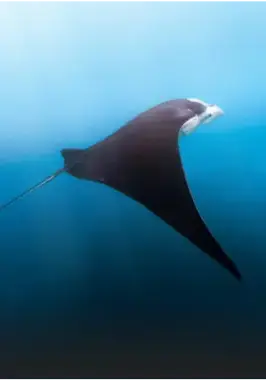Saint John's - Abu Fendera
The Straits of Tiran is a popular diving destination located in the Red Sea, off the coast of Egypt. It's known for its crystal-clear waters, diverse marine life and beautiful dive sites.The Straits of Tiran is a popular diving destination located in the Red Sea, off the coast of Egypt. It's known for its crystal-clear waters, diverse marine life and beautiful dive sites.The Straits of Tiran is a popular diving destination located in the Red Sea, off the coast of Egypt. It's known for its crystal-clear waters, diverse marine life and beautiful dive sites.
The Program
All dives + activities are conducted accordingly to weather conditions and experience!
SS Thistlegorm
18-35 M What you can expect to find
The SS Thistlegorm is a remarkable wreck dive that offers a glimpse into the history of World War II. This British cargo ship was carrying a variety of military equipment, such as tanks, trucks, motorcycles, rifles, and even locomotives, when it was attacked by German bombers in 1941 and sunk in the Red Sea. The wreck lies at a depth of 14 to 30 meters, and is well preserved by the clear and warm water. Divers can explore the exterior and interior of the ship, and marvel at the intact artifacts that are still visible after more than 80 years. The SS Thistlegorm is also home to a rich marine life, including lionfish, barracuda, shrimp, and sometimes even dolphins and turtles. The SS Thistlegorm is one of the most famous and popular dive sites in the world, and attracts thousands of divers every year. It is recommended to dive the wreck as part of a liveaboard trip, as it can take several hours to reach the site from the shore.
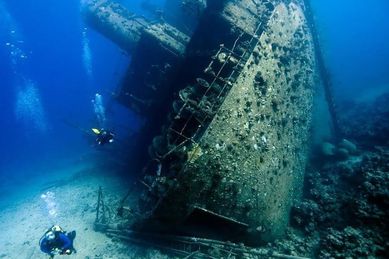
Kimon M
6-32 M What you can expect to find
The Kimon M is a popular wreck diving site in the Red Sea, located near the Sha’ab Abu Nuhas Reef. The ship was a refrigerated cargo vessel that sank in 1978 after hitting the reef at full speed. The ship was carrying 4,500 tons of lentils, which earned it the nickname of the “Beans Wreck”. The wreck lies on its starboard side, with the stern at 32 meters and the bow at 10 meters depth12 and The ship is 106.4 meters long and 14.8 meters wide. The forward part of the ship is badly damaged and collapsed, but the aft part is still intact and offers some penetration opportunities. This wreck is home to a variety of marine life, such as lionfish, moray eels, scorpionfish, nudibranchs, and glassfish. Also the wreck is known for its spectacular coral growth, especially on the port side and the superstructure. The wreck is suitable for divers of all levels, but caution is advised due to the strong currents and the sharp metal edges.
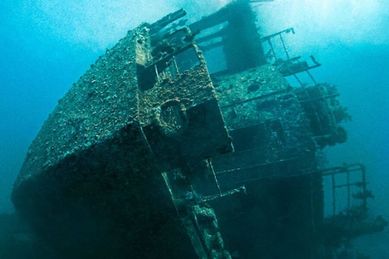
Chrisoula K
4-27 M Chrisoula K
The Chrisoula K is a popular wreck dive site in the Red Sea, located on the north-eastern side of Abu Nuhas reef. The ship was a Greek cargo vessel that sank in 1981 after hitting the reef while carrying a load of over 3,000 tonnes of Italian floor tiles. The tiles gave the ship its nickname, the “Tile Wreck”. The ship was 98 meters long and 15 meters wide, and had a single diesel engine that gave it a maximum speed of 13.5 knots. The wreck lies in a fairly upright position at the base of the reef, with the bow embedded in the coral and the stern keeled over almost completely onto its starboard side. The depth ranges from 4 meters at the bow to 30 meters at the stern. The visibility is usually good and the current is mild. The wreck offers a variety of diving experiences, from exploring the exterior and admiring the marine life, to penetrating the interior and seeing the engine room, the cargo holds, and the tiles.
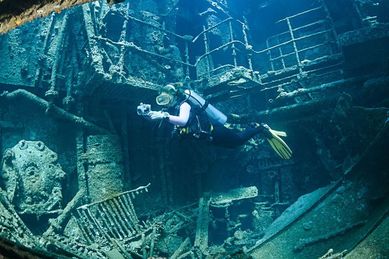
Carnatic
18-27 M Carnatic
Carnatic diving site is a popular wreck dive in the Red Sea, near Shadwan Island in Egypt. The Carnatic was a British cargo ship that sank in 1869 after hitting the Abu Nuhas Reef. The ship was carrying wine, mail, and gold, some of which are still inside the wreck. The wreck lies at a depth of 20 to 28 meters and is accessible to intermediate divers. The Carnatic is covered with soft corals and sponges, and hosts a variety of marine life, such as batfish, glassfish, lionfish, moray eels, and turtles. The wreck is divided into two parts: the bow and the stern. The bow is still intact and offers a spectacular view of the coral-encrusted hull and the wine bottles inside. The stern is more damaged and collapsed, but still worth exploring. The Carnatic is one of the oldest and most beautiful wrecks in the Red Sea, and a must-see for any wreck lover. The best time to visit the Carnatic is from March to November, when the visibility is good and the weather is calm.
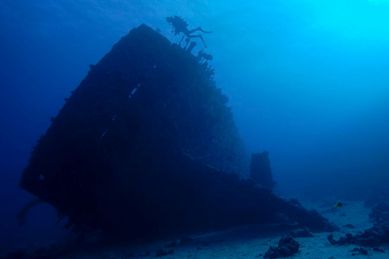
SS Thistlegorm
18-35 M What you can expect to find
The SS Thistlegorm is a remarkable wreck dive that offers a glimpse into the history of World War II. This British cargo ship was carrying a variety of military equipment, such as tanks, trucks, motorcycles, rifles, and even locomotives, when it was attacked by German bombers in 1941 and sunk in the Red Sea. The wreck lies at a depth of 14 to 30 meters, and is well preserved by the clear and warm water. Divers can explore the exterior and interior of the ship, and marvel at the intact artifacts that are still visible after more than 80 years. The SS Thistlegorm is also home to a rich marine life, including lionfish, barracuda, shrimp, and sometimes even dolphins and turtles. The SS Thistlegorm is one of the most famous and popular dive sites in the world, and attracts thousands of divers every year. It is recommended to dive the wreck as part of a liveaboard trip, as it can take several hours to reach the site from the shore.
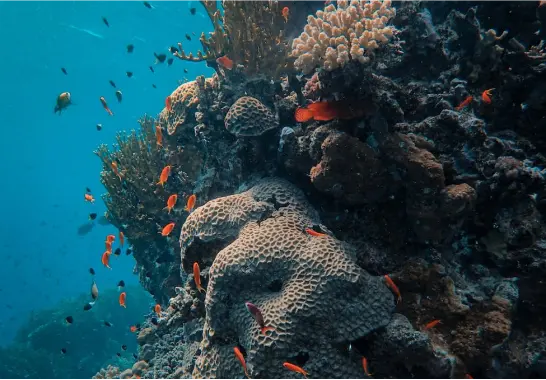
Kimon M
6-32 M What you can expect to find
The Kimon M is a popular wreck diving site in the Red Sea, located near the Sha’ab Abu Nuhas Reef. The ship was a refrigerated cargo vessel that sank in 1978 after hitting the reef at full speed. The ship was carrying 4,500 tons of lentils, which earned it the nickname of the “Beans Wreck”. The wreck lies on its starboard side, with the stern at 32 meters and the bow at 10 meters depth12 and The ship is 106.4 meters long and 14.8 meters wide. The forward part of the ship is badly damaged and collapsed, but the aft part is still intact and offers some penetration opportunities. This wreck is home to a variety of marine life, such as lionfish, moray eels, scorpionfish, nudibranchs, and glassfish. Also the wreck is known for its spectacular coral growth, especially on the port side and the superstructure. The wreck is suitable for divers of all levels, but caution is advised due to the strong currents and the sharp metal edges.<br/>

Chrisoula K
4-27 M Chrisoula K
The Chrisoula K is a popular wreck dive site in the Red Sea, located on the north-eastern side of Abu Nuhas reef. The ship was a Greek cargo vessel that sank in 1981 after hitting the reef while carrying a load of over 3,000 tonnes of Italian floor tiles. The tiles gave the ship its nickname, the “Tile Wreck”. The ship was 98 meters long and 15 meters wide, and had a single diesel engine that gave it a maximum speed of 13.5 knots. The wreck lies in a fairly upright position at the base of the reef, with the bow embedded in the coral and the stern keeled over almost completely onto its starboard side. The depth ranges from 4 meters at the bow to 30 meters at the stern. The visibility is usually good and the current is mild. The wreck offers a variety of diving experiences, from exploring the exterior and admiring the marine life, to penetrating the interior and seeing the engine room, the cargo holds, and the tiles.

Carnatic
18-27 M Carnatic
Carnatic diving site is a popular wreck dive in the Red Sea, near Shadwan Island in Egypt. The Carnatic was a British cargo ship that sank in 1869 after hitting the Abu Nuhas Reef. The ship was carrying wine, mail, and gold, some of which are still inside the wreck. The wreck lies at a depth of 20 to 28 meters and is accessible to intermediate divers. The Carnatic is covered with soft corals and sponges, and hosts a variety of marine life, such as batfish, glassfish, lionfish, moray eels, and turtles. The wreck is divided into two parts: the bow and the stern. The bow is still intact and offers a spectacular view of the coral-encrusted hull and the wine bottles inside. The stern is more damaged and collapsed, but still worth exploring. The Carnatic is one of the oldest and most beautiful wrecks in the Red Sea, and a must-see for any wreck lover. The best time to visit the Carnatic is from March to November, when the visibility is good and the weather is calm.<br/>

Marine Life
Red Sea is a treasure trove for wreck enthusiasts and wide variety of marine life.
